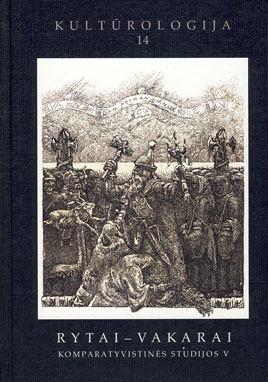Sustabarėjusi sąmonė: „dvasinės stabmeldystės" samprata
Stiffened Consciousness: the Concept of Inner Idolatry According to the Semantics of the Lithuanian Word Stabas 'Idol
Author(s): Dainius RazauskasSubject(s): Cultural Essay, Political Essay, Societal Essay
Published by: Lietuvos kultūros tyrimų
Keywords: idolatry; idol; stiffened consciousness
Summary/Abstract: The article deals with the semantic connotations of the Lith. stabas 'idol' based on its etymology. Firstly, its original meaning was 'post, pole', and the word is directly connected with the lettish stabs 'post, pole', Germ. stab, eng. staff etc., primitive idols being the carved poles. But the word is also directly connected with the Old Prussian stabis (*stabas) 'stone', and as the stone idols are widely known too, the original meaning of the Lith. stabas might also be 'stone'. Furthermore, Lith. stabas also mean 'paralysis, stiffness' and is directly connected with such verbs as Lith. stabinti, stabyti, stabdyti '(make) stop, stem'. Anyway, the ground root of all of the mentioned words is I-E *steb(h)-which, among others, has the meanings 'stem (anhalten)' and 'make stiff, stiffen (versteifen)'; in the latin definition by Kazys Būga, 'immo- bile fieri'. It is to be noted that the original meaning of the baltic * stabas, according to Vtautas Mažiulis, was namely 'stiffness, hardness'. Now, the psychological semantics of stiffness and hardness is well known; cf., for instance, the notion of hardened heart etc. Then, the symbolic image of petrification is well attested in mythology and folklore. The image of fire concealed in the stone by the devil known in Baltic folklore may be reckoned in here too. All this may be considered as indicating the psychological and spiritual sense of idolatry, a peculiar 'inner idolatry' corresponding to the idea of stiffened consciousness. Finally, some 'religiosophic' connotations of this idea may be observed. For instance, the stone relief of the holy fire worshipped by some biblical figures on the pediment of Vilnius Cathedral erected in the place of an ancient pre-Christian temple where formerly the live holy fire was worshipped.
Journal: Kultūrologija
- Issue Year: 2006
- Issue No: 14
- Page Range: 224-244
- Page Count: 20
- Language: Lithuanian

